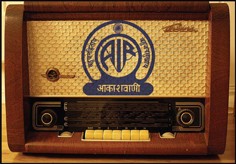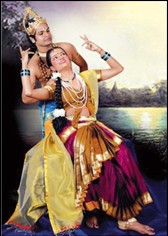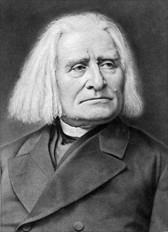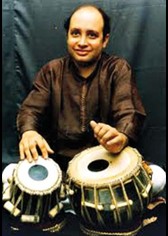COVER STORY - ALL INDIA RADIO by S. SANKARANARAYANAN

“Broadcasting in most countries does not base its policy exclusively on pleasing the majority. It is to the advantage of broadcasting to widen if it can the scope of listener’s tastes…. Thus we find in most broadcasting organisations that classical music gains a place which a majority vote would not actually give it and it is undoubtedly true that the taste for classical music has in many countries been considerably strengthened by this policy.” – From the first report of the Controller of Broadcasting published in 1940. The services rendered by All India Radio (AIR) towards promotion, propagation and preservation of classical music have no parallel in the cultural history of independent India. Music was in the past the preserve of a few in some princely states. The advent of AIR completely changed that scenario; it took music to the homes of music lovers, and gave musicians a country-wide audience. Women performers and up-and-coming musicians were major beneficiaries of this exposure. AIR was mandated to maintain a high standard of music through a system of audition. For innumerable youngsters with talent, a radio programme was a passport to prominence and a sure means of gaining recognition in music circles all over India. Even maestros first gained a pan-Indian audience through AIR; television was decades away.
FIRST PERSON - Ravi Varma’s heroines come alive on stage by PARVATHI RAVI GHANTASALA

At the Esplanade Theatre Studio, Singapore, I sat with high expectations. The Heroines of Raja Ravi Varma did not disappoint. It all started with a phone call from Aravinth Kumarasamy, Managing and Creative Director, Apsaras Arts, explaining to me the concept of his upcoming venture. He asked me if I could be the guest choreographer for Heroines of Raja Ravi Varma. The concept was exciting and the scope wide. I readily accepted. It was only much later, when I had finished my classes for the day and sat idle, that it actually hit me. The magnitude of the production and the implication of my decision slowly dawned upon me. I knew little about Ravi Varma: “Raja Ravi Varma (April 29, 1848 - October 2, 1906) was an Indian painter from the princely state of Travancore who achieved recognition for his depiction of scenes from the epics like the Mahabharata and Ramayana.” Besides, it was no easy task to bring out the essence of his intense paintings through dance. The choreography had to be expressive, subtle and elegant – and yet had to convey to the public, the tales of Raja Ravi Varma’s heroines. There was so much to do.
WINDOW TO THE WORLD - FRANZ LISZT by MANOHAR PARNERKAR

Franz Liszt, the 19th century Hungarian born composer, pianist and conductor, will always remain special for me for two reasons: One, he is the only major composer of Western classical music whom I first discovered through a Hollywood movie (The 1960 Liszt bio-pic A Song Without End sub-titled The Story of Franz Liszt, starring British actor Dirk Bogarde in the lead role) now also available on DVD. And two, it was Liszt’s popular composition Hungarian Rhapsody No 2 in C sharp minor for solo piano that kindled my interest in Western classical music and led to my life-long love affair with it. Frankly, little did I realise then that Liszt was not only the pianist’s pianist, but in real life was more charismatic – and colourful – than Bogarde portrayed on the screen, and more important, was also a seminal force of 19th century Romanticism. If the Romantic Century were to be defined by one single composer, it would have to be Franz Liszt. To say this Hungarian born was a colourful figure is like saying there are many stars in the sky. Liszt had many character traits – each one more fascinating and paradoxical than the other. A quick look at his condensed CV would probably read somewhat as follows. “He was born in Raiding (Hungary) in 1811, and died in Bayreuth (Germany) in 1886. After 1827, he lived in Paris for most of his life. He was one of the greatest pianists of all time, also the greatest piano showman, the inventor of the public piano concert and music’s first international superstar. A versatile composer who wrote symphonies, songs, masses, oratorios, and concertos, he invented a new musical genre called the ‘symphonic tone poem’. A great conductor of his own as well as other composers’ music, he was also an outstanding piano teacher, and promoter of artists. Finally, he was a critic, essayist and litterateur.”
SAVAL-JAVAB - ABHIJIT BANERJEE in conversation with SURESH RAMASWAMY

Abhijit Banerjee, an accomplished tabla player and academician, has been a disciple of Jnan Prakash Ghosh, and learnt vocal music from Ajoy Chakraborty and the violin from Annapoorna Devi. His concert experience includes accompanying such maestros as Ravi Shankar, Nikhil Banerjee, Parveen Sultana, Pandit Jasraj, and Shiv Kumar Sharma. He has collaborated in several fusion efforts and has his own touring ensemble named Tarang besides being a member of the raga-jazz group, Arohi Ensemble. He teaches tabla and percussion in general at the Dhwani Academy of Percussion Music which he founded. A graduate in English literature and post graduate in Journalism, Banerjee spoke to Suresh Ramaswamy on a recent visit to Chennai.


